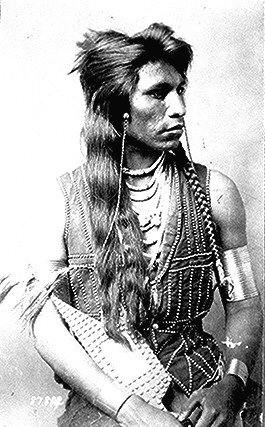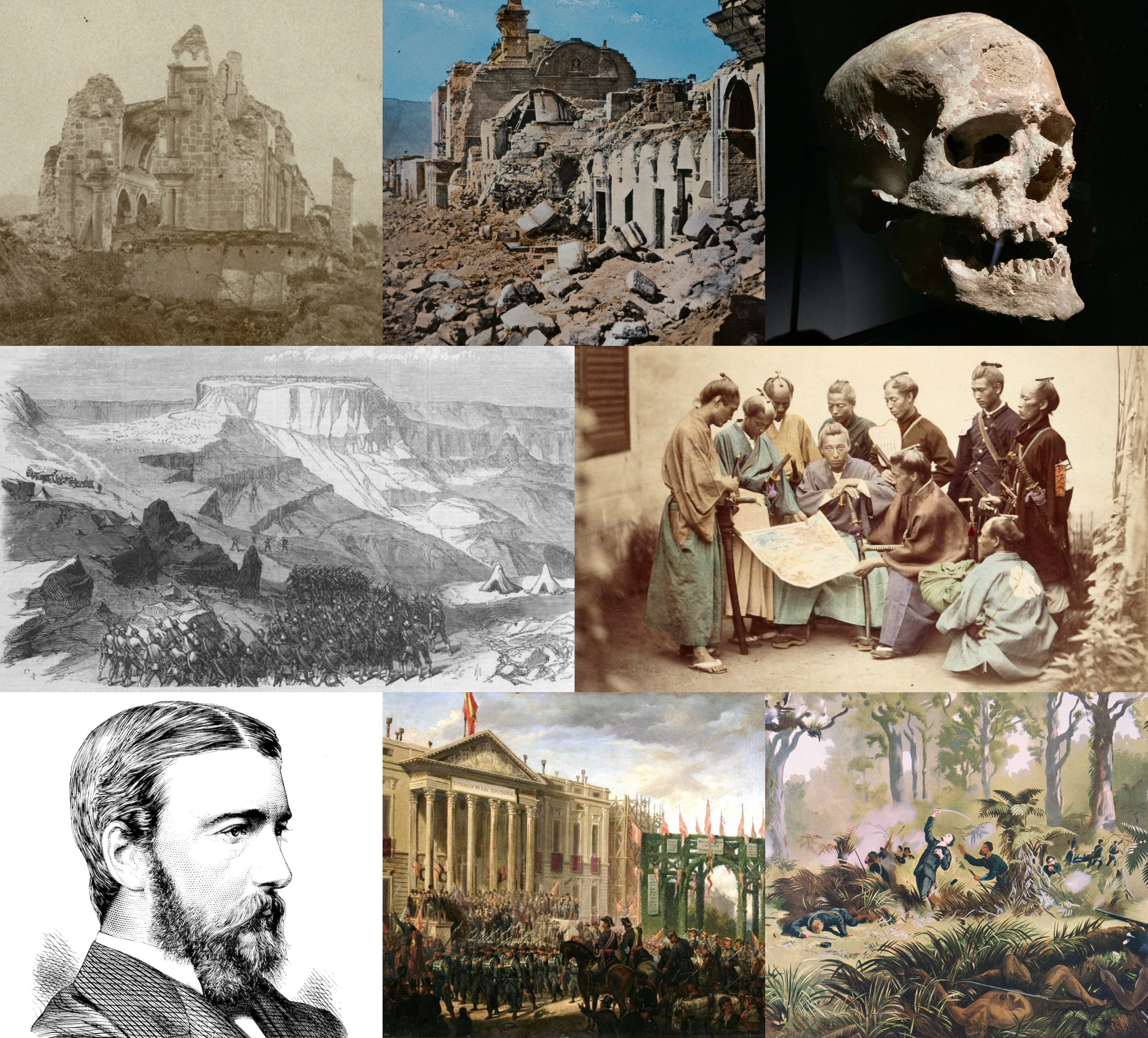|
Fort Bridger Treaty
This Fort Bridger Treaty Council of 1868, was also known as the Great Treaty Council, was a council that developed the Fort Bridger Treaty of 1868 (also Shoshone Bannock Treaty). The Shoshone, also referred to as the Shoshoni or Snake, were the main American Indian group affected by this treaty. The event itself is significant because it was the last treaty council which dealt with establishing a reservation. After that council, executive Orders were used to establish reservations. Members of the tribe on the Fort Hall Reservation, established by the treaty, became involved in the Bannock Wars in 1878 and 1895. July 3, 1868 Fort Bridger Treaty Source:https://jacksonholehistory.org/wp-content/uploads/1868-treaty.pdf {{Bare URL PDF, date=March 2022 ANDREW JOHNSON, PRESIDENT OF THE UNITED STATES OF AMERICA, TO ALL AND SINGULAR TO WHOM THESE PRESENTS SHALL COME, GREETING: Whereas a treaty was made and concluded at Fort Bridger, in the Territory of Utah, on the third day of July, ... [...More Info...] [...Related Items...] OR: [Wikipedia] [Google] [Baidu] |
Shoshone
The Shoshone or Shoshoni ( or ), also known by the endonym Newe, are an Native Americans in the United States, Indigenous people of the United States with four large cultural/linguistic divisions: * Eastern Shoshone: Wyoming * Northern Shoshone: Southern Idaho * Western Shoshone: California, Nevada, and Northern Utah * Goshute: western Utah, eastern Nevada They traditionally speak the Shoshoni language, part of the Numic languages branch of the large Uto-Aztecan languages, Uto-Aztecan language family. The Shoshone were sometimes called the Snake Indians by neighboring tribes and early American explorers. Their peoples have become members of List of federally recognized tribes, federally recognized tribes throughout their traditional areas of settlement, often co-located with the Northern Paiute people of the Great Basin. Etymology The name "Shoshone" comes from ''Sosoni'', a Shoshoni language, Shoshone word for high-growing grasses. Some neighboring tribes call the Shoshone ... [...More Info...] [...Related Items...] OR: [Wikipedia] [Google] [Baidu] |
Shoshoni
The Shoshone or Shoshoni ( or ), also known by the endonym Newe, are an Indigenous people of the United States with four large cultural/linguistic divisions: * Eastern Shoshone: Wyoming * Northern Shoshone: Southern Idaho * Western Shoshone: California, Nevada, and Northern Utah * Goshute: western Utah, eastern Nevada They traditionally speak the Shoshoni language, part of the Numic languages branch of the large Uto-Aztecan language family. The Shoshone were sometimes called the Snake Indians by neighboring tribes and early American explorers. Their peoples have become members of federally recognized tribes throughout their traditional areas of settlement, often co-located with the Northern Paiute people of the Great Basin. Etymology The name "Shoshone" comes from ''Sosoni'', a Shoshone word for high-growing grasses. Some neighboring tribes call the Shoshone "Grass House People," based on their traditional homes made from ''sosoni''. Shoshones call themselves ''Newe'', ... [...More Info...] [...Related Items...] OR: [Wikipedia] [Google] [Baidu] |
Native Americans In The United States
Native Americans (also called American Indians, First Americans, or Indigenous Americans) are the Indigenous peoples of the Americas, Indigenous peoples of the United States, particularly of the Contiguous United States, lower 48 states and Alaska. They may also include any Americans whose origins lie in any of the indigenous peoples of North or South America. The United States Census Bureau publishes data about "American Indians and Alaska Natives", whom it defines as anyone "having origins in any of the original peoples of North and South America ... and who maintains tribal affiliation or community attachment". The census does not, however, enumerate "Native Americans" as such, noting that the latter term can encompass a broader set of groups, e.g. Native Hawaiians, which it tabulates separately. The European colonization of the Americas from 1492 resulted in a Population history of Indigenous peoples of the Americas, precipitous decline in the size of the Native American ... [...More Info...] [...Related Items...] OR: [Wikipedia] [Google] [Baidu] |
Indian Reservation
An American Indian reservation is an area of land land tenure, held and governed by a List of federally recognized tribes in the contiguous United States#Description, U.S. federal government-recognized Native American tribal nation, whose government is Tribal sovereignty in the United States, autonomous, subject to regulations passed by the United States Congress and administered by the United States Bureau of Indian Affairs, and not to the state governments of the United States, U.S. state government in which it is located. Some of the country's 574 List of Native American Tribal Entities, federally recognized tribes govern more than one of the 326 List of Indian reservations in the United States, Indian reservations in the United States, while some share reservations, and others have no reservation at all. Historical piecemeal land allocations under the Dawes Act facilitated sales to non–Native Americans, resulting in some reservations becoming severely fragmented, with pie ... [...More Info...] [...Related Items...] OR: [Wikipedia] [Google] [Baidu] |
Executive Order (United States)
In the United States, an executive order is a directive by the president of the United States that manages operations of the federal government. The legal or constitutional basis for executive orders has multiple sources. Article Two of the United States Constitution gives presidents broad executive and enforcement authority to use their discretion to determine how to enforce the law or to otherwise manage the resources and staff of the federal government's executive branch. The delegation of discretionary power to make such orders is required to be supported by either an expressed or implied congressional law, or the constitution itself.John Contrubis, '' Executive Orders and Proclamations'', CRS Report for Congress #95-722A, March 9, 1999, Pp. 1-2 The vast majority of executive orders are proposed by federal agencies before being issued by the president. Like both legislative statutes and the regulations promulgated by government agencies, executive orders are subjec ... [...More Info...] [...Related Items...] OR: [Wikipedia] [Google] [Baidu] |
Fort Hall Reservation
The Fort Hall Reservation is a Native American reservation of the federally recognized Shoshone- Bannock Tribes ( Shoshoni language: Pohoko’ikkateeCrum, B., Crum, E., & Dayley, J. P. (2001). Newe Hupia: Shoshoni Poetry Songs. University Press of Colorado. Pg. 20doi.org/10.2307/j.ctt46nz00/ref>) in the U.S. state of Idaho. This is one of five federally recognized tribes in the state. The reservation is located in southeastern Idaho on the Snake River Plain about north and west of Pocatello. It comprises of land area in four counties: Bingham, Power, Bannock, and Caribou. To the east is the Portneuf Range; both Mount Putnam and South Putnam Mountain are located on the Fort Hall Reservation. Founded under an 1868 treaty, the reservation is named for Fort Hall, a trading post in the Portneuf Valley that was established by European Americans. It was an important stop along the Oregon and California Trails in the middle 19th century. A monument on the reservation marks ... [...More Info...] [...Related Items...] OR: [Wikipedia] [Google] [Baidu] |
Bannock War
The Bannock War of 1878 was an armed conflict between the U.S. military and Bannock and Paiute warriors in Idaho and northeastern Oregon from June to August 1878. The Bannock totaled about 600 to 800 in 1870 because of other Shoshone peoples being included with Bannock numbers. They were led by Chief Buffalo Horn, who was killed in action on June 8, 1878. After his death, Chief Egan led the Bannocks. He and some of his warriors were killed in July by a Umatilla party that entered his camp in subterfuge. The U.S. military, consisting of the 21st Infantry Regiment and volunteers, was led by Brigadier General Oliver O. Howard. Nearby states also sent militias to the region. The conflict ended in August and September 1878, when the remaining scattered Bannock-Paiute forces surrendered; many returned to Fort Hall Reservation. The U.S. Army forced some 543 Paiute from Nevada and Oregon and Bannock prisoners to be interned at Yakama Indian Reservation in southeastern Washingt ... [...More Info...] [...Related Items...] OR: [Wikipedia] [Google] [Baidu] |
Wind River Indian Reservation
The Wind River Indian Reservation, in the west-central portion of the U.S. state of Wyoming, is shared by two Native Americans in the United States, Native American tribes, the Eastern Shoshone (, ''meaning: "buffalo eaters"'') and the Northern Arapaho (). Roughly east to west by north to south, the Indian reservation is located in the Wind River Basin, and includes portions of the Wind River Range, Owl Creek Mountains, and Absaroka Range. The Wind River Indian Reservation is the List of largest Indian reservations, seventh-largest American Indian reservation in the United States by area and the fifth-largest by population. The land area is approximately , and the total area (land and water) is . The reservation constitutes just over one-third of Fremont County, Wyoming, Fremont County and over one-fifth of Hot Springs County, Wyoming, Hot Springs County. The 2000 United States Census, 2000 census reported the population of Fremont County as 40,237. According to the 2010 cen ... [...More Info...] [...Related Items...] OR: [Wikipedia] [Google] [Baidu] |
Chief Washakie
Washakie (1804/1810 – February 20, 1900) was a prominent leader of the Shoshone people during the mid-19th century. He was first mentioned in 1840 in the written record of the American fur trapper, Osborne Russell. In 1851, at the urging of trapper Jim Bridger, Washakie led a band of Shoshones to the council meetings of the Treaty of Fort Laramie. Essentially from that time until his death, he was considered the head of the Eastern Shoshones by the representatives of the United States government. In 1979, he was inducted into the Hall of Great Westerners of the National Cowboy & Western Heritage Museum. Early life Much about Washakie's early life remains unknown, but some information is revealed. Washakie was born between 1798 and 1810. His mother Lost Woman, was a Tussawehee (White Knife) Shoshone by birth. His father, Crooked Leg (Paseego), was an Umatilla rescued as a boy from slave traders at Wakemap and Celilo in 1786 by Weasel Lungs, a Tussawehee dog soldier (White ... [...More Info...] [...Related Items...] OR: [Wikipedia] [Google] [Baidu] |
United States And Native American Treaties
United may refer to: Places * United, Pennsylvania, an unincorporated community * United, West Virginia, an unincorporated community Arts and entertainment Films * ''United'' (2003 film), a Norwegian film * ''United'' (2011 film), a BBC Two film * ''The United'' (film), an unreleased Arabic-language film Literature * ''United!'' (novel), a 1973 children's novel by Michael Hardcastle Music * United (band), Japanese thrash metal band formed in 1981 Albums * ''United'' (Commodores album), 1986 * ''United'' (Dream Evil album), 2006 * ''United'' (Marvin Gaye and Tammi Terrell album), 1967 * ''United'' (Marian Gold album), 1996 * ''United'' (Phoenix album), 2000 * ''United'' (Woody Shaw album), 1981 Songs * "United" (Judas Priest song), 1980 * "United" (Prince Ital Joe and Marky Mark song), 1994 * "United" (Robbie Williams song), 2000 * "United", a song by Danish duo Nik & Jay featuring Lisa Rowe * "United (Who We Are)", a song by XO-IQ, featured in the television ser ... [...More Info...] [...Related Items...] OR: [Wikipedia] [Google] [Baidu] |
1868 Treaties
Events January * January 2 – British Expedition to Abyssinia: Robert Napier leads an expedition to free captive British officials and missionaries. * January 3 – The 15-year-old Mutsuhito, Emperor Meiji of Japan, declares the ''Meiji Restoration'', his own restoration to full power, under the influence of supporters from the Chōshū and Satsuma Domains, and against the supporters of the Tokugawa shogunate, triggering the Boshin War. * January 5 – Paraguayan War: Brazilian Army commander Luís Alves de Lima e Silva, Duke of Caxias, enters Asunción, Paraguay's capital. Some days later he declares the war is over. Nevertheless, Francisco Solano López, Paraguay's president, prepares guerrillas to fight in the countryside. * January 7 – The Arkansas constitutional convention meets in Little Rock. * January 9 – Penal transportation from Britain to Australia ends, with arrival of the convict ship ''Hougoumont'' in Western Australia, after an 89- ... [...More Info...] [...Related Items...] OR: [Wikipedia] [Google] [Baidu] |








